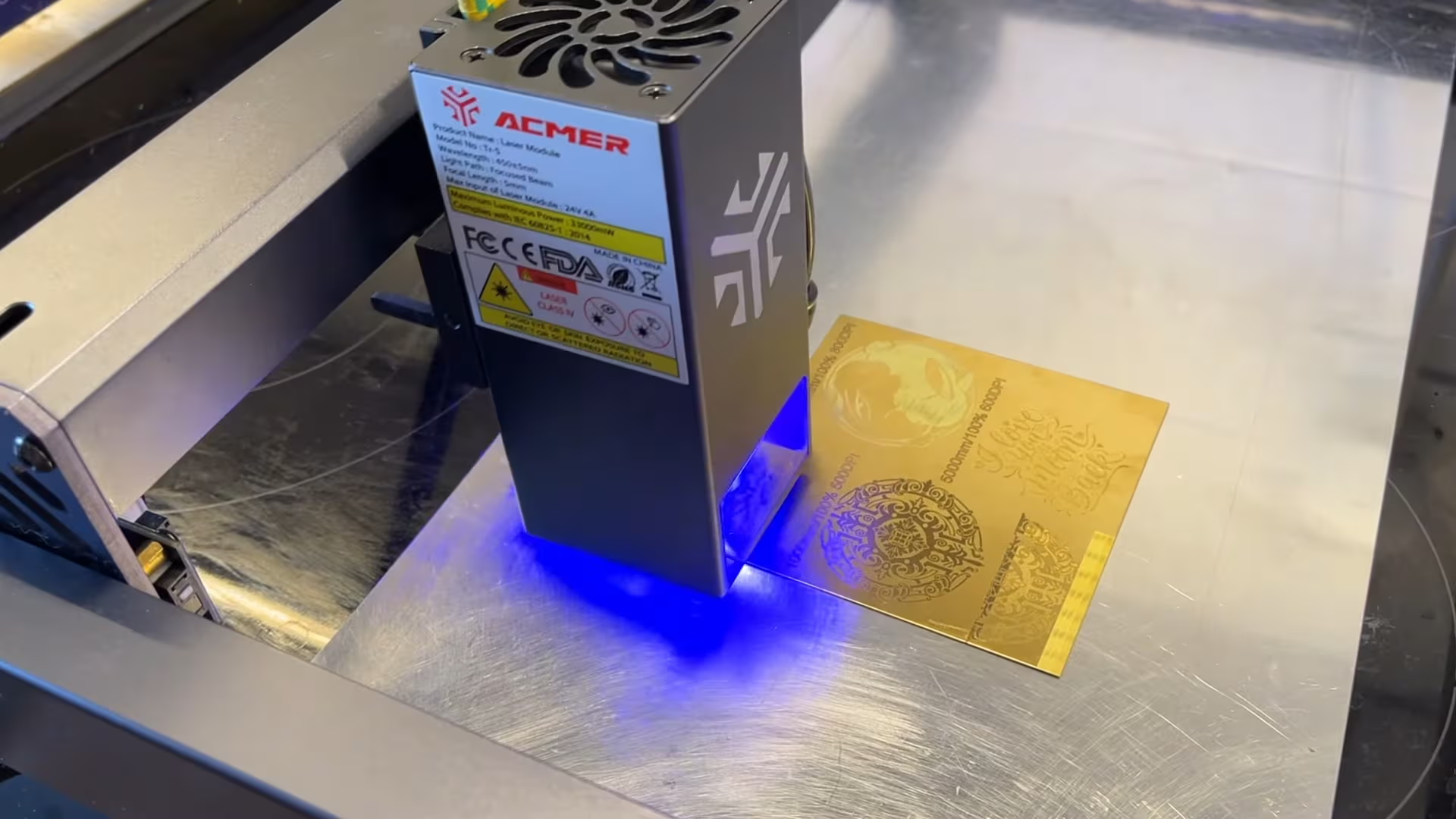Understanding CO2 Laser Technology
CO2 laser marking is the latest innovation in laser technology that use a CO2 laser to engrave, etch, or mark a given surface swiftly and with high accuracy. It is a non-contact marking type that uses energy from infrared light to burn permanent high-contrast marks on several mediums, including wood, glass, plastic, leather, and ceramics. Given that CO2 laser marking is efficient, dependable, and highly adaptable, it is used in an array of sectors, from manufacturing and packaging to medical and consumer goods.
View Co2 Laser Marking Machine for sale – UDTECH for More Details.
The laser uses a gas mix that contains the following components: carbon dioxide, nitrogen, and helium. When excited with electricity, the nitrogen colliding with the CO2 generates energy in the form of light, which is further amplified. The resulting light is infrared and, once focused, forms a powerful laser beam. With its focus and intensity, the laser can either vaporize or change the texture of a material to make high-contrast, lasting marks on its surface.
Click here to read more about the Top Co2 Laser Marking Machine Manufacturer and Supplier in China – UDTECH.
Components of a CO2 laser marking machine
Laser source. CO2 laser machine core where a CO2 laser beam is produced. It comprises a sealed, glass, or metal tube filled with the gas mixture.
Optical System. Concentrator mirrors and lenses are used to focus and direct the laser beam to the material.
Controller. Digital interface or software where users have to input designs and manage the marking process.
Cooling System. Maintains the laser source and other system components within optimum operating temperatures.
Work Surface. Normally, the adjustable area of the machine where the object to be marked is placed.
The combination of all the above components results to precise and effective laser marking. It is this feature that makes CO2 laser machines indispensable in contemporary laser marking.
Applications of CO2 Laser Marking
Fields that apply CO2 laser technology
The CO2 laser marking – engraving and marking as well – more sophisticated and complex, and its mastery spans many industries: automotive, aerospace, electronics, and packaging. Medical CO2 laser systems are used to engrave surgical tools and devices to enable their identification and ensure compliance with traceability requirements. Expires and batch date marking in the food and beverage sector also benefits from the reliability and efficiency of CO2 laser marking systems.
Engraving organic materials, however, is one of the competencies singled out. They comprise of wood and organic materials, leather, papers, fabrics, and even some polymers. CO2 systems: their high-energy infrared laser scarcely causes damage and distortion of the surfaces of organic materials. This unparalleled precision makes CO2 lasers the go-to devices for the engraving of logos, custom patterns, and product information that are so often found in the fashion, furniture, and stationery industries.
Custom Applications and Innovations
The versatility of CO2 laser marking systems has opened doors to various custom applications and innovations. Numerous companies have utilized these lasers for innovative branded merchandise by personalizing promotional products, gifts, and awards, providing custom engravings. In addition, newer developments in laser technology have led to complex designs and high-resolution images, which fetch value in art and other decorative applications. With relentless innovations to come, CO2 laser marking systems remain unmatched in their versatility for both industrial and artistic applications.
Benefits of CO2 Laser Marking Over Other Methods
Precision and Detail in Engraving
Marking with a CO2 laser is one of the most accurate techniques available, achieving remarkable detail in laser engraving. The technology captures delicate designs beautifully and is popular in settings that require intricate detailing and high resolution. CO2 laser can sharply engrave clean logos on wood and leather, and delicate patterns on glassware, showcasing its unbeatable versatility.
Speed and Efficiency Compared to Fiber Lasers
Though fiber lasers are better at marking some metals and plastics, CO2 laser machines have faster and more efficient marking on all the other non-metal materials including wood, acrylic, and paper. They engrave and cut faster without losing quality. This enhances the productivity of CO2 lasers in a variety of settings, including one-off customized pieces and bulk production. This business model is efficient with laser engraving in line with the demand across different sectors.
Cost-Effectiveness of CO2 Laser Machines
The laser CO2 engravers are cheaper when compared to fiber CO2 engravers. Having lower purchase costs makes them practical for low-budget operations, small businesses, and enthusiasts alike for diverse engraving work. This, in addition to the capacity to engrave on several substrates, reduces the need for multiple laser CO2 engravers, directly lowering the operational costs of the organization. The low cost of repairs and the durability of the laser engravers help in proving that these systems, especially CO2 lasers, are most cost-effective for industrial and commercial purposes.
Maintenance of CO2 Laser Marking Machines
Regular Maintenance Tips for Longevity
Maintaining CO2 laser marking machines in proper working order guarantees maximum utility and increases durability. Lenses and mirrors should be polished periodically to prevent interference from debris, as this can affect precision and laser efficiency. Ensure that the cooling system is functional, as overheating can destroy machine components. Additionally, machine belts, rails, and motors should be examined for wear and tear, and movable parts should be lubricated to lessen friction. Keeping the machine in a clean and dust free environment also helps prevent unnecessary machine malfunction.
Common Issues and Troubleshooting
With time, several issues with the CO2 laser marking machine itself can be expected. For example, if a marking fills in inconsistently, the machine is likely suffering from point laser mirroring and or a fogged-over lens. Clean and re-align the machine’s optical components. In the event the laser is powered but does not fire, or if the laser loses power altogether, the power unit needs inspection. All cables must also be fastened. Furthermore, if the machine is working and strange sounds or shaking occur, the machine may be suffering from wear and tear, and as a result, several parts might need realignment or replacement. Detailed steps to start the machine should be described in the machine manual.
When to Seek Professional Help
There are instances when professional help will be needed, even if the most basic of tasks could be handled internally. If the power to the laser is severely diminished, if the machine is displaying chronic problems with alignment, or if there are software issues that block the software from being used, these all require the help of radiation technicians. If the machine undergoes repairs beyond its intended boundaries, it is far more likely to be damaged. Timely servicing is arguably more important than correcting existing issues. Regularly servicing the machine will allow it to operate optimally and will also highlight possible issues down the line.
Choosing the Right CO2 Laser Marking Machine
Factors to Consider for Your Specific Needs
When deciding which CO2 laser marking machine to work with, it is important to think through your applications to the last detail. Identify the material you will work with as different machines have different compatibility levels to metals, plastics, glass and other substrates. Consider the marking speed and the precision for your projects as it aids in ascertaining whether the machine will meet the production demands. For industries that require high-resolution engravings, it is best to use laser engravers with high precision and detail in their engravings. Ease of use is very important with machine size and portability, especially when the workspace is limited.
Comparing Models and Features
Every CO2 laser marking machine has different features, and comparing them is very important. Assess the machine’s wattage as it dictates the power the machine generates and the depth of engraving. More powerful machines work better for heavy-duty operations, as low-powered machines work better for intricate designs. Other factors to consider are software compatibility, the ease of the user interface, and the cooling systems to aid in overheating control during long hours of use. Reviews and testimonials can be helpful in deciding, as they give a better perspective on the machine.
Budgeting for a CO2 Laser Engraving Machine
Having a set budget is very important for a CO2 laser engraving machine because there is no telling how much money will be needed, as prices differ depending on power, features, and brand equity. In addition to the principal amount, money may be needed for periodic expenses such as maintenance, software updates, and spare parts. It pays to look into the warranty package and post-sale support that is wrapped within the price. Also, budget laser engravers may not come with a fully developed set of functions, but you need to be sure that they suit the volume of work to be done and will come in handy.









